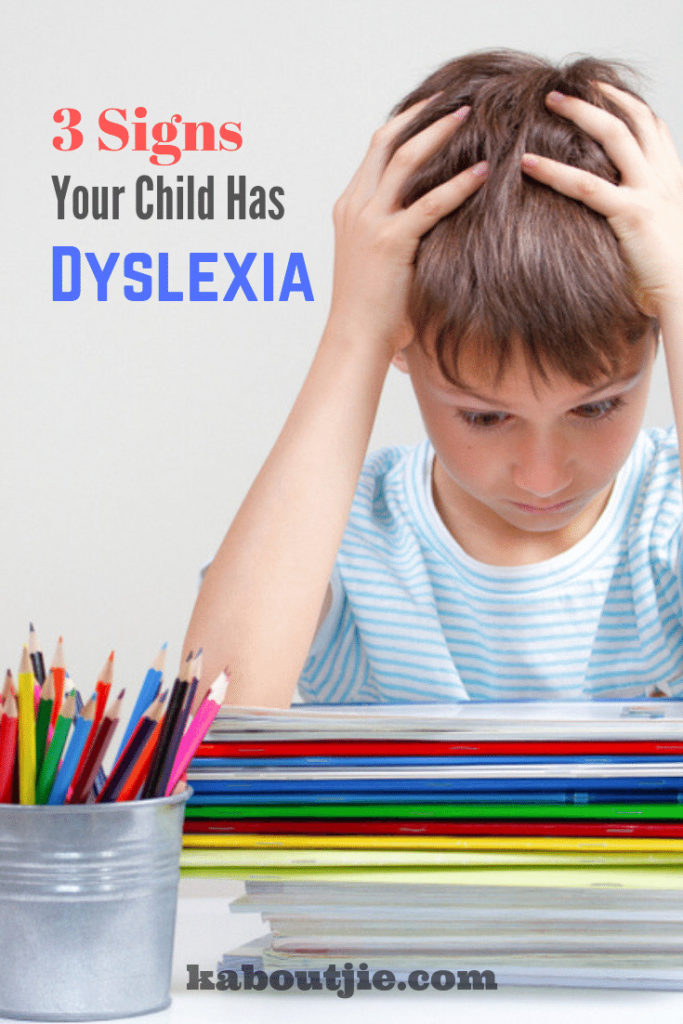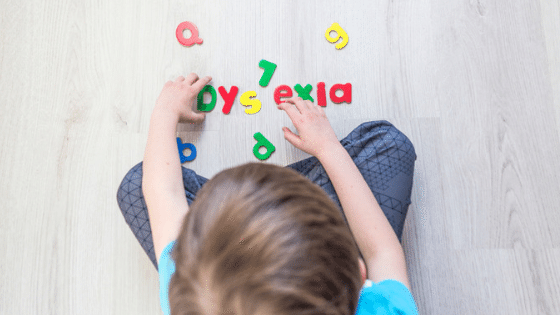Dyslexia is a learning disorder that affects fifteen to twenty five percent of the population. People suffering from dyslexia experience problems with their ability to read, write, spell and speak. Kids who has dyslexia are often very intelligent and hardworking but are having trouble with connecting letters they say with the sounds those letters make. There is often nothing wrong with their vision as such, but it takes them longer to read due to them struggling to process words. Dyslexia is generally due to inherited genetic links and affects females and males equally, no matter their socio-economic backgrounds or ethnic groups.

What are dyslexia children symptoms?
Even though there is no cure for dyslexia early detection and intervention can result in a desirable outcome. The condition can go undiagnosed for years and is only recognized during adulthood, but it is never too late to seek assistance.
It is often difficult to recognize dyslexia children symptoms before the child enters school, but there are a few early signs that could indicate a problem. A child’s teacher may notice the problem once the child starts reading.
3 Most common symptoms of dyslexia
- Memorising, spelling, thinking and understanding (cognitive).
- Speech delay in a child or learning disability (developmental).
- Delayed reading ability, headaches or speech impairments.
Dyslexic checklist children
To verify whether an individual is dyslexic they must be tested by a qualified examiner. The following issues may be associated with the disorder if they are unexpected for the child’s age, cognitive capabilities and educational level:
Smaller children:
- May start talking at a later stage than most children.
- May have trouble in pronouncing words for instance, saying “busgetti” instead of “spaghetti” or “mawn lower” instead of “lawnmower”.
- May not be able to recall the right word.
- Are slow with adding new vocabulary words.
- Having trouble with rhyming.
- Having trouble with learning numbers, the alphabet, days of the week, colours, shapes and spelling or writing his or her name.
- May have trouble with interacting with his or her peers.
- Developing of motor skills slower than other children.
- Having trouble with following multi-step routines or directions.
- May experience trouble to retell a story in the correct sequence.
- Often struggle with separating sounds in words or blending sounds to make words.

Kindergarten until fourth grade
- Are unable to read single words in isolation.
- Not learning the connection between sounds and letters at the same pace as other children.
- Confusing small words like said/and or to/at.
- Making coherent spelling and reading errors including:
- Reversal of letters – d for b such as dog for bog
- Reversal of words – pit for tip
- Inversions – u and n or m and w
- Substitutions – home and house
- Transpositions – left and felt
- May be confusing arithmetic signs or transposing number sequences.
- Having trouble with remembering facts.
- May be slower with learning new skills and rely on memorizing instead of understanding.
- May be impulsive and accident-prone.
- Having difficulty with planning.
- Often using an awkward grip when holding a pencil.
- May have trouble in telling time.
- May have substandard fine motor coordination skills.
Middle school
- Making many spelling errors.
- Reads at a substandard academic level compared to how he or she speaks.
- Constantly having to re-read passages and sentences.
- The child avoids reading out loud in class (decoding words are difficult with dyslexia)
- Having difficulty in saying the right words that sound similar.
- Having problems with expressing themselves correctly due to poor spelling, grammar and punctuation.
- Struggling to “fit in “with class mates and participating in group projects.
High school
- Regularly skipping over small words when reading out aloud.
- Is not reading at the expected grade level.
- Prefers doing multiple-choice questions as opposed to fill-in-the-blank or short answers.
- Struggles to understand puns, proverbs and idioms.
- Having difficulty in sharing his thoughts, getting to the point or supporting an argument.
- Having trouble in reading charts or graphs.
- Guessing the meaning of foreign words and the pronunciation.
Other information about dyslexia
- Dyslexia is not just an obstacle when it comes to learning. The disorder can influence everyday activities and skills like dealing with stress, memory issues, social interaction and doing things such as driving or learning a foreign language.
- Other issues such as ADHD, auditory processing disorder, language disorders and dysgraphia can co-occur with dyslexia.
- Among students with special learning disabilities who are receiving special education services, as high as eighty percent are having deficits in reading.
- Dyslexia is the most common cause relating to spelling, reading and writing issues.
- A child can experience significantly lesser problems in learning to read at grade level once the disorder is identified and they receive effective phonological training during kindergarten and first grade unlike children whose disorder wasn’t identified or addressed until third grade.
- A staggering seventy four percent of children who were poor readers in third grade remained substandard readers in the ninth grade, meaning they couldn’t read when they entered adulthood.
- The possible causes of dyslexia are:
- Heredity and genes – the disorder often runs in families and more or less 40 percent of siblings of kids with dyslexia are having similar problems. Approximately 49 percent of parents of kids with the disorder have it too. Studies have shown that multiple genes are linked to issues such as processing language and reading. Children who has one parent with Dyslexia has a 50% chance and children who has both parents with Dyslexia has 100% of having it.
- Brain activity and anatomy – Studies performed by using brain imaging have shown differences in the brain of people with the disorder than those without it. These differences were situated in areas of the brain that involve vital reading skills. These skills have an affect on how sounds are interpreted in words as well as recognising what the written words look like. The dyslexic brain is larger and generally more creative than an average brain.
- Dyslexia is a disorder that is the most common learning disability.
 Kaboutjie SA Mommy Blogs by Lynne Huysamen
Kaboutjie SA Mommy Blogs by Lynne Huysamen





Thank you for sharing this important information
Love this article thank you for sharing
Thank you so much for this article its very informative I never knew anything about dyslexia
Now I know what it is now
The biggest challenge I’ve come across is getting the parents to get their children proper assistance. I’m an aftercare supervisor and studying towards my honors in psychological counseling. Parents never take me serious when I tell them to have their children checked for dyslexia. If the teacher misses it who am I to suggest such.
My neighbour struggled all the way through school, he told me recently that he was diagnosed with dyslexia for the first time 2 years ago, at the age of 40. More people should be made aware of it!
Great advice thank you
Can it also be detected from say like 3 yrs old? If parents do not genetically do not have it, is it also possible for a child to have it?
It is usually from around the age kids start to read that it is picked up Kamo, so more likely 5 to 6 years old than 3 years old. And yes a child can be dyslexic if the parents aren’t.
Very interesting and helpful thank you this will definitely be of use and something to look out for in our kids